By Ryan Murphy
The fire service has realized the importance of prefire planning for many years, with the current format dating back to building construction expert Francis Brannigan, after his return from World War II.1 The fire service has since collaborated with other public and private stakeholders to produce comprehensive preplans for special events.
- Managing EMS at Special Events
- Event Planning in a Downtown District
- Responding to “Routine” Incidents at Large-Event Venues
In recent years, the world has witnessed both natural and manmade tragedies. Event planners and first responders need to have a playbook to work from in the event of a major incident. These plans need to drill down to a single-station response to the local farmers market. This article outlines what’s needed for an incident action plan (IAP) and an events location assessment. It also covers the necessary tools for anticipating a weather event, security, and working with protective details.
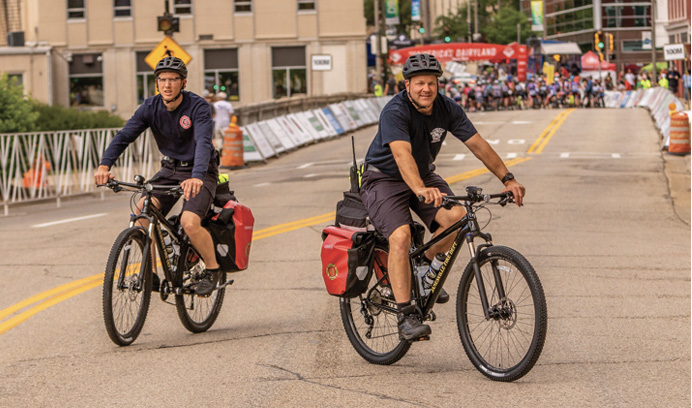
(1) Photos 1-3 by Dave Sheen; photo 4 by author.
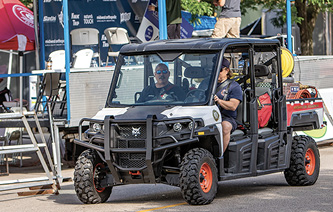
(2)
The Written Plan
Having a written plan is critical to successful prefire planning. Here are important steps to keep in mind during the process.
Review the location. When the planning team (law enforcement, fire, EMS, and public works) receives an application for an upcoming special event, one of the first steps should be to review the location with a map provided by the event organizers. The planning team needs to look for ingress and egress, hydrant locations, staging areas, elevated positions, and landing zones, just to name a few.
Discuss the vision for the event. Following the planning team’s review of the location, require the organizers to meet with the team at the location and to discuss their vision for the event. The planning process and each step are always dependent on the scale of the event, possible disruption to the local area, and public safety organizations.
Each planning team should build a special events matrix to assist with the planning process (Figure 1). The matrix can assist with determining equipment needs; supplies required for the event; and additional personnel staffing needs due to the event size, temperatures, or attendance projections (photos 1 and 2) .
Plan out the IAP. The planning team needs to begin the process of building the IAP. Using National Incident Management System or incident command system (ICS) forms will provide the team with an established template that is recognized by federal, state, and local officials. (You’ll find plenty of training opportunities that discuss ICS forms through FEMA.)
Along with the ICS forms, a planning team or an individual department/division of the planning team can formulate a tactical action plan (TAP) as a supplement to the IAP. The TAP may address specifics to a certain discipline of the planning team, the event, or the location (Figure 2).
Furthermore, the planning team needs to build into the IAP an awareness of distracting events or of a large response that may draw resources surrounding the event or that would be responding to the event if necessary. The special events IAP should also include a trigger for the unified command staff to backfill for their home agencies.
Create maps. Planning teams should also establish a good relationship with their local geographic information systems (GIS) group. GIS groups can assist with the production of mapping for your local events. These maps can be customized to meet any needs the planning team has.
A map that includes grids can assist with large events that lack geographical markers. The grid map can be distributed to volunteers, event staff, and responders to help locate an incident in a more efficient manner.
Finalize the IAP. Once the planning team has all the ICS forms, maps, and supplemental information completed, it should hold a final meeting ahead of the event. This last meeting finalizes the IAP and ensures that all event organizers are on the same page. This step ends when the planning team signs off on the IAP.
The Event Location
Keep the following points in mind as you make all necessary considerations for the location of the event.
Visit the location. All members of the planning team should visit the location for the special event and review their discipline’s needs. If the team has access to drones, views from above can be useful. (Google Earth is another option, but up-to-date satellite images are not always available.)
Prioritize protection. When viewing the event location, remember that protecting the attendees is the number one priority. Harden the event area with law enforcement and with specific patron access points of protection from vehicles that may attempt to enter the area either intentionally or accidentally (photo 3).
Allow for access. Even when access to the area is restricted, fire/EMS personnel still need to be able to respond into the area. Establish whether the event will bring obstacles that may further disrupt normal response routes—e.g., stages; finish lines; or simply crowds that cannot be dispersed in a quick, orderly fashion. Potential deviations in response patterns should be noted in the written plan that is distributed to the local authorities and mutual-aid partners.
Figure 1. Special Events Matrix

Think through the exits. As many events use specific access points, be prepared to answer the following questions:
- What if hundreds of people need to evacuate rapidly?
- Are there additional exits that can be easily opened, or does the venue have breakaway exits that can be moved easily to evacuate the attendees?
- On mass evacuations, can we make announcements that can lead attendees out of the event or in a specific direction?
- Does the event have instructions that are preloaded and can be displayed on event screens?
Consider supplies needs. Depending on the size and type of event, some fire/EMS organizations predeploy mass-casualty incident (MCI) supplies. Many departments have invested in MCI trailers, which I recommend having prepositioned in the area.
Exercise caution when positioning this equipment within the venue, and keep in mind that advertising the purpose of the apparatus could turn the MCI unit into a target itself. Additionally, patrons who are attending an event may be unnerved by seeing “Mass Casualty Response Unit” in large, bold letters.
Along with an MCI unit, consider prepositioned mass-casualty supplies like backboards to move possible patients or “stop the bleeding” throw bags that contain SWAT-T tourniquets, emergency trauma/Israeli dressing, and pressure dressing (photo 4) (Figure 2).
Figure 2. Tactical Action Plan (TAP) Example
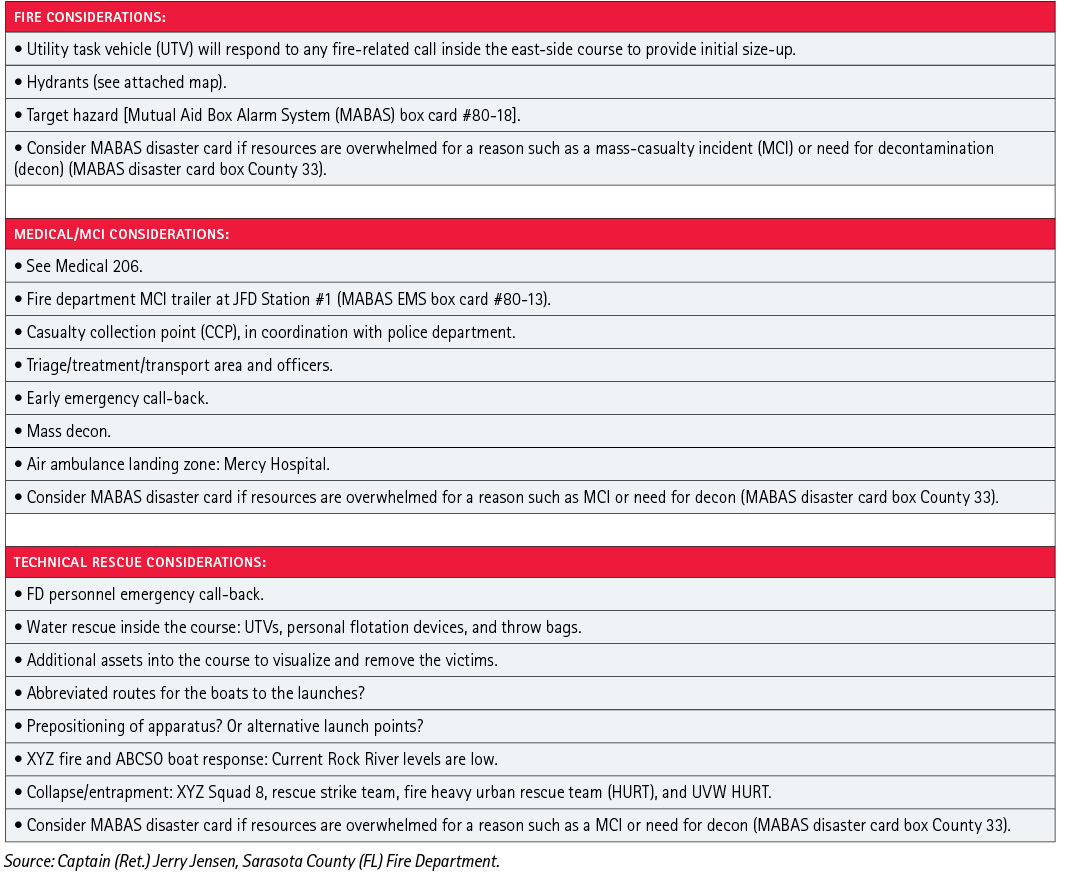
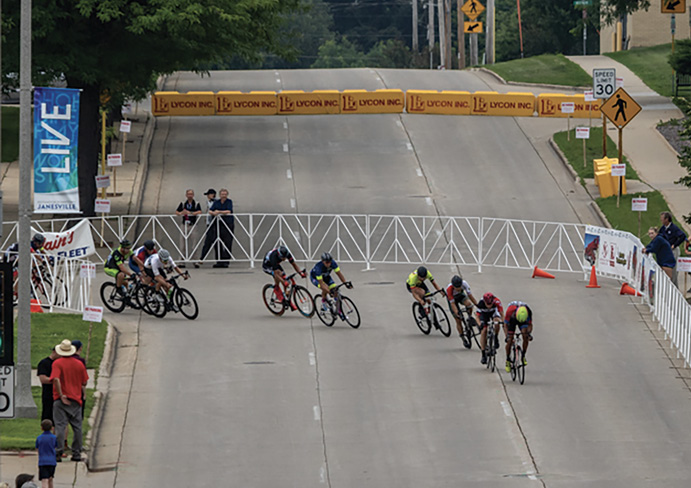
(3)
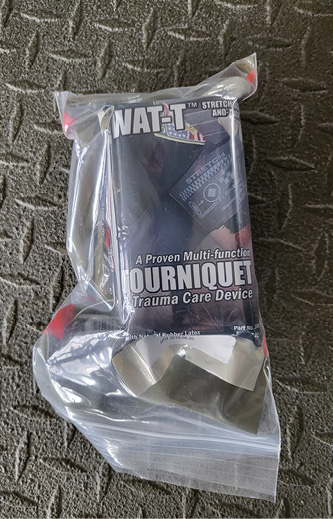
(4)
Plan for casualty collection points. In addition to supplies, consider personnel assigned to specific areas of the event. Use caution in predesignating casualty collection points (CCP) for events. The CCP may not be in the most advantageous location in the event of an MCI, and the CCP location should not be written into the plan, as some plans are widely shared.
Depending on the event location, determine a designated entrance through which emergency services respond, to eliminate confusion. This designated location can serve as the site where an event organizer meets ambulance or law enforcement personnel to lead them to an exact area or to an individual needing assistance.
Weather Considerations
Weather plays a large role in the planning of any event. It affects the number of staff and supplies a fire/EMS organization needs to adequately protect a venue and its patrons. Severe weather can cause a multitude of problems for a special event. Many planning teams use local meteorologists to assist with the planning and day-of operations for an event.
The National Weather Service (NWS) provides support for local planning officials (federal, state, and local personnel only). Here’s how it works:
Register your event. To receive support from the NWS, register your event online with the NWS.
Participate in NWSChat 2.0. The NWS accepts first responders to participate in NWSChat 2.0, an instant messaging program used by NWS operational personnel. (The platform was recently updated from the original NWSChat.) This platform is a place to receive critical warning decision expertise and other types of significant weather information essential to the NWS’s mission of saving lives and property.
This information is exchanged in real time with the media and emergency response community, who in turn play a key role in communicating the NWS’s hazardous weather messages to the public. NWS partners can use NWSChat 2.0 as an efficient means of seeking clarifications and enhancements to the communication stream originating from the NWS during a fast-paced significant weather or hydrologic event.2
Receive assistance in real time. The NWS office that monitors the area of the event will provide real-time assistance the day of the event. Our local planning team has used this service many times, and the NWS has always provided relevant information on approaching weather conditions. This service has given us time to evacuate patrons to designated weather shelters and, on one occasion, to move vintage World War II aircraft into hangars and safely out of the path of damaging hail.
Security Considerations
The overall security of an event falls to our law enforcement partners, but we as the fire service should still be knowledgeable and proactive. To begin, we must remember that it’s nearly impossible to totally secure a special event venue. The following items cover the components of security the planning team should keep in mind.
Consider the appropriate security level. Together, the planning team and event organizers must determine how secure the location should be and the costs that go along with that. No matter the event or location, organizers, volunteers, attendees, and fire/EMS personnel should be encouraged to report suspicious activities.
Promote “See Something, Say Something.” Promoting “See Something, Say Something” during any large or small event is a basic, appropriate practice.3 Besides reporting suspicious activity, encourage event organizers to report any threatening or suspicious comments they see on social media. Reporting these comments to law enforcement can assist with an overall threat assessment of the event.
Contribute to social media monitoring. Many law enforcement agencies are proficient in monitoring social media. As for the fire service, any assistance with monitoring social media should be closely coordinated with law enforcement.
Work with the fusion center. The fusion center that serves your area of responsibility can provide details on the current threat environment and relevant information to the planning team to assist in making effective decisions for the IAP.
Stay on top of overwatch efforts. Considering recent incidents, law enforcement may perform overwatch (looking down on an event or area) of special events. Fire/EMS should be aware of an overwatch position/task for situational awareness and have a plan for removing an individual in the event of a medical emergency.
Be aware of artificial intelligence (AI). We’ve seen many positive headlines about the use of AI, but it’s important to remember that AI will assist offenders in planning and executing more sophisticated attacks. The threat landscape during day-to-day operations and special events is ever evolving, and the fire service needs to continue to keep up with trends and threats.
Take advantage of and learn from training opportunities and after-action reports from mass-casualty events.
Protective Details
As we approach the 2024 elections and campaigns, the fire service, along with planning teams, will work with protective details that accompany politicians and high-profile individuals as they make their way across the United States. Here’s a look at how your planning team can expect to collaborate with protective details, in a broad sense:
Receive requests for resources. Depending on the individual they are guarding, protective details will notify the planning team and make specific requests for resources.
Share information about fire and EMS departments. Having a generic document that gives the protective details information about fire and EMS departments, equipment, station locations, and special operations capabilities will provide a basic understanding of the department and its abilities.
Share details about area hospitals. Providing information regarding local hospitals and their trauma level, the nearest medical helicopters, regional hazmat or technical rescue resources, and any hazards within your community will help facilitate the detail’s ability to effectively carry out its function in your area.
Establishing a planning team and having an effective preincident playbook provides your fire and EMS organization and your community with a protective and offensive plan of action. Whether there’s a need for a single-ambulance response to an event like a block party or a major response to a stage collapse at a music venue (or anything on that level), the plan serves as a road map for all responders.
It provides the commanders with a unified strategy in response to probable or potential hazards. A planning group should include firefighters, EMS, law enforcement, and public works, all of whom respond to day-to-day events.
Fire personnel becoming more involved in preevent planning is the future. This partnership will provide a more efficient and effective framework for the next small- or large-scale response in your area.
ENDNOTES
1. Schudel, Matt, “Fire-Safety Expert Frank Brannigan,” The Washington Post, January 21, 2006. wapo.st/3GscKdw.
2. “NWSChat 2.0 Rollout,” National Oceanic and Atmospheric Administration, August 8, 2023.
noaa.gov/NWSChat.
3. “If You See Something, Say Something,” U.S. Department of Homeland Security. bit.ly/4cwhlc.
RYAN MURPHY is a battalion chief with the Janesville (WI) Fire Department and the fire/EMS liaison for the Wisconsin Statewide Intelligence Center in Madison, WI. He serves as safety officer with the Wisconsin Task Force 1 Urban Search and Rescue Team. He has a bachelor’s degree in fire science from Columbia Southern University.

